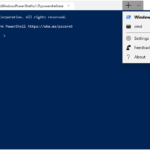Terminal services provided by Microsoft Terminal Server has become increasingly essential for today’s networking architecture. Thus it’s important to speed up Terminal Server performance and increase its processing speed. Redmondmag has listed a few tips and tweaks to optimize the configuration of Terminal Server.
Among these useful optimization tips, some of the Registry tweaks have been around for a while, but other guides are new to Windows Server 2003, and all tricks are to streamline the Terminal Server resources.
The optimization tweaks for Registry that increase the performance of Terminal Server in Windows Server 2003 include eliminate IE flickering, disable Office 2003 Customer Experience Improvement Program, disable File Locking, disable NTFS Last-Accessed time stamping, turn off Lazy Writes (caching write operations before writing them to disk), improve Windows kernel performance by preventing the system from paging kernel mode drivers and system code to disk, increase the network request buffer, prevent Terminal Server session hangs when users logoff by modify available network buffers and open connections, speed up application load times by pre-loading commonly used files into memory, disable caching of Roaming Profiles and disable unused subsystems.
Visit Redmondmag (resource no longer available) for detail instructions on how to perform the configuration on your Terminal Server. There is also code from .REG registry settings file that configure all of the tweaks mentioned at once.







